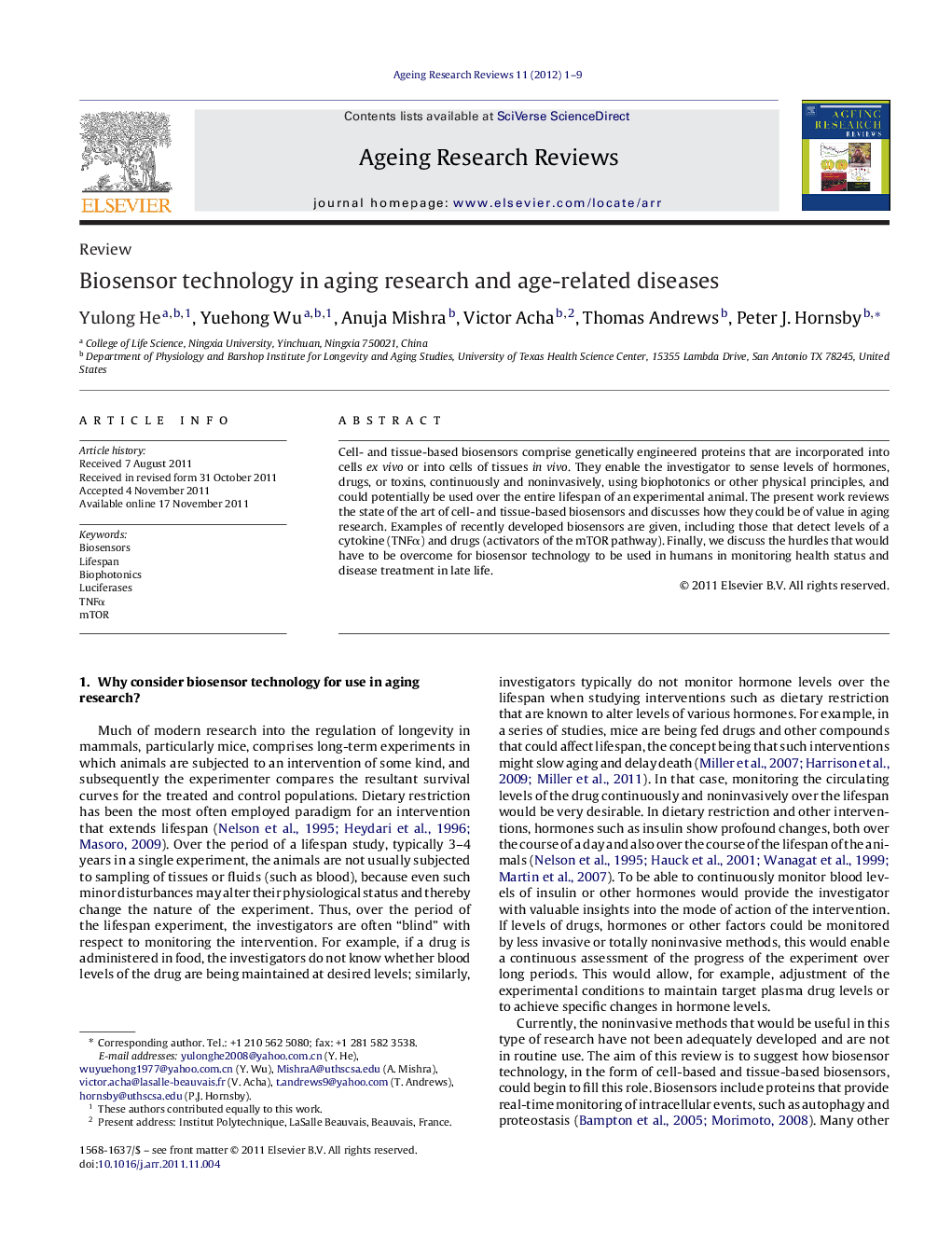| Article ID | Journal | Published Year | Pages | File Type |
|---|---|---|---|---|
| 1902321 | Ageing Research Reviews | 2012 | 9 Pages |
Cell- and tissue-based biosensors comprise genetically engineered proteins that are incorporated into cells ex vivo or into cells of tissues in vivo. They enable the investigator to sense levels of hormones, drugs, or toxins, continuously and noninvasively, using biophotonics or other physical principles, and could potentially be used over the entire lifespan of an experimental animal. The present work reviews the state of the art of cell- and tissue-based biosensors and discusses how they could be of value in aging research. Examples of recently developed biosensors are given, including those that detect levels of a cytokine (TNFα) and drugs (activators of the mTOR pathway). Finally, we discuss the hurdles that would have to be overcome for biosensor technology to be used in humans in monitoring health status and disease treatment in late life.
► There is a need for long-term noninvasive monitoring in animals in aging research. ► Cell- and tissue-based biosensors provide a novel method for long-term monitoring. ► Despite progress, obstacles to truly noninvasive monitoring remain. ► Biosensors could potentially be used for long-term monitoring in human medicine.
